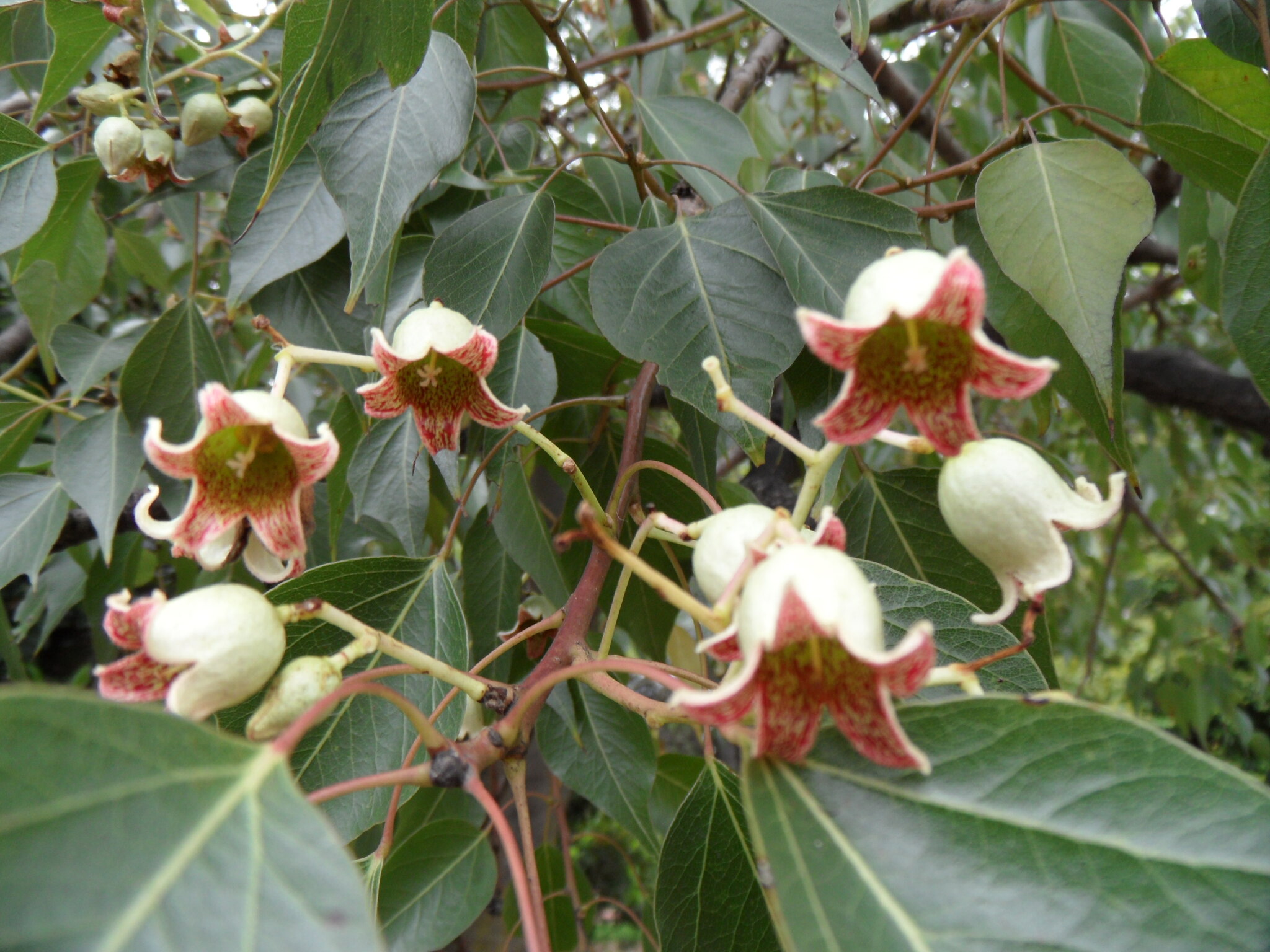
A thickly-foliaged tree 10-15 m tall. Leaves variable, mostly ovate-lanceolate but occasionally palmate with 3-5 lobes. Leaf stalk 5-10 cm long. Flowers about 2 cm long, soft-hairy and pale yellow outside, hairless and greenish-yellow with red markings in the throat; late spring to early summer. Carpels hairy. Fruit 5-7 cm long in clusters on stalks 2-5 cm long.
subsp. trilobus Guymer has 3(-5) lobed leaves and is occasionally encountered in cultivation. A specimen can be seen in Melbourne at Princes Park at the entrance to the Carlton Social Club.
Qld, NSW, Vic
Grows naturally in forest and woodland.
Often grown as a fodder and shade plant for stock, mostly in drought-prone inland areas. Aboriginals used fibre as cord for fishing nets and lines, dilly bags and the roots for food.
SA: Adelaide Zoo (by reptile house) ACT: Braddon (Limestone Ave), Forrest (Tasmania Circle). NSW: Camden (Macarthur Park); Forbes (Victoria Park); Australian Botanic Garden Mount Annan (Terrace Garden); Narrandera (Park). VIC: Camberwell (Edinburgh Gds); Caulfield Park (many); Charlton (picnic/playground); Coburg (De Chene Reserve); Fitzroy Gardens (many on periphery of park); Irymple (Main Street); Kalimna (Nyerimilang Heritage Park, 16 m tall in 1991); Kew (Carey Baptist Grammar School); Malvern (Central Park); Melbourne (Treasury Gardens); Mildura (large tree in Deakin Ave behind Baptist Church - about 10 m tall); St Arnaud (Queen Mary Gardens); Williamstown (Williamstown Botanic Gardens).
subsp. trilobus Guymer has 3(-5) lobed leaves and is occasionally encountered in cultivation. A specimen can be seen in Melbourne at Princes Park at the entrance to the Carlton Social Club.
B. ×turgidulus Guymer subsp. turgidulus (B. populneus × B. rupestris) has a slightly swollen trunk and leaves like B. populneus but is intermediate in floral characters; it occurs naturally in SE Queensland and is occasionally cultivated.
Source: (1997). Sterculiaceae. In: . Horticultural Flora of South-eastern Australia. Volume 2. Flowering plants. Dicotyledons. Part 1. The identification of garden and cultivated plants. University of New South Wales Press.
